Dahlias are pretty flowers that come in a variety of colors. For a lush, attractive garden and beautiful bouquets, you need to take good care of them. You can do that by planting them correctly, in good soil, and cutting them back. How do you cut them back, and when should you do this? We consulted with experts who gave us the following answers.
It's good to cut back your dahlias for fuller blooms, to remove disease, and prepare them for the winter. You ought to do this in late fall, in October, and November. There are three ways of pruning, including:
- To promote growth
- To prevent the spread of disease
- To prepare for the winter season
Continue reading to learn the reasons for pruning your dahlia flowers and the correct methods to cut them back. Included are the best season to prune and tips on how to grow healthy dahlias.
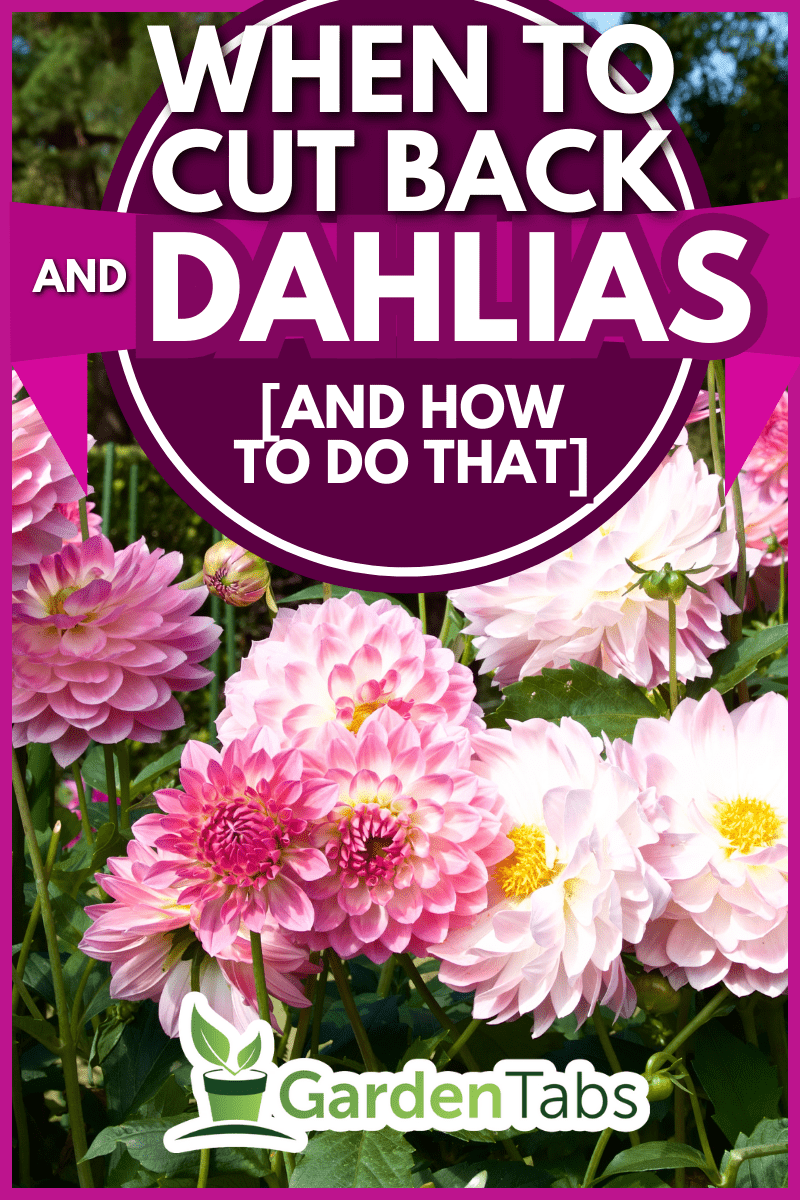
When And How Do You Cut Back On Your Dahlias?
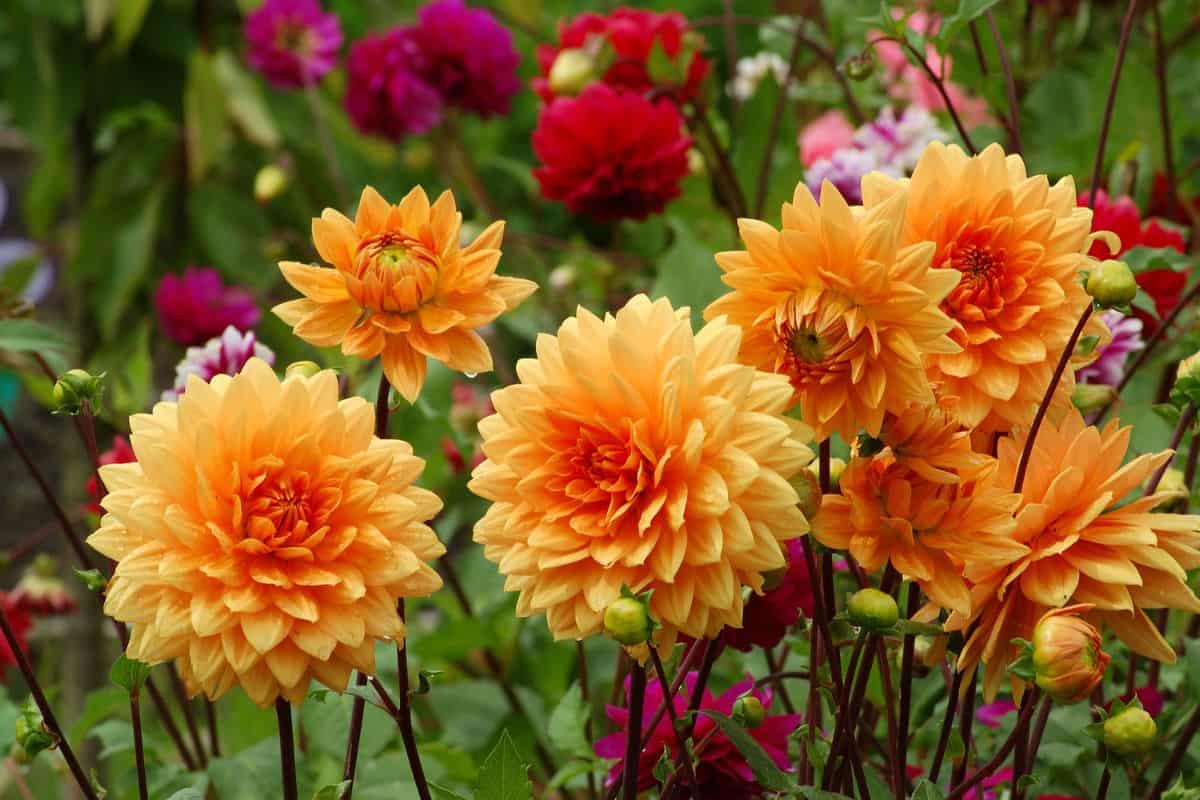
You can have fuller and healthier dahlias by cutting them back, which is quite easy to do. The three ways to prune them are discussed below:
To Promote Growth
You can encourage the growth of your flowers by pruning. The following steps will help you harvest more dahlia flowers:
Cut Off The Tips
When your dahlia flowers begin growing, four bunches of leaves emerge on each plant. They will have grown to a height between 12 and 16 inches, though they could grow taller.
On the fourth bunch of leaves from the bottom, cut off the top sprout that's between two leaves. By doing this, your plant will grow fuller, producing more flowers.
You can cut using a pair of garden pruning scissors. Alternatively, you could nip it with your thumb and forefinger. To promote even more flowers to bloom, you can carry on cutting new growth throughout the growing season.
Decide The Size Of Your Blooms
If you prefer giant flowers that grow up to 10 inches in diameter, control the number of stems to between three to five per plant. The energy in the plant will focus on growing a few large flowers, instead of many small ones.
If you prefer smaller flowers that grow only up to two inches in diameter, up to 10 stems per plant will suffice.
Cut Off Faded Flowers
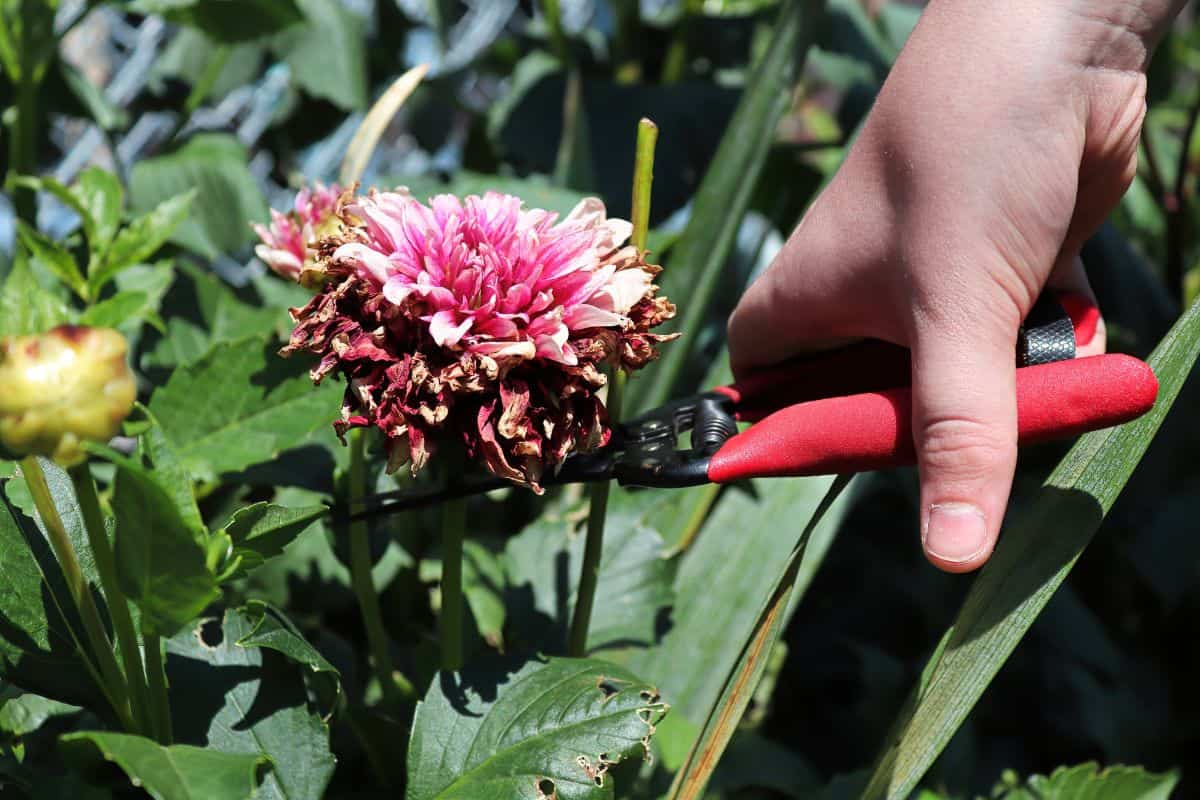
Remove the faded flowers, also known as deadheading, promoting the growth of more blooms. Cut back the stem to the point it meets another main stem. You can do this throughout the fall season.
As dahlias continue growing, the stems become tough. Thus it's best to use a sharp tool to cut the flower. Examples of sharp-cutting tools include pruning shears like the one shown below or sharp scissors.


Check out this pruning shears on Amazon.
When Deadheading Avoid The Rounded Buds
After all the petals have fallen during deadheading, there’ll be two types of buds, which are difficult to differentiate. One type of bud is cone-shaped, left after pruning the flower, and the other type is the new flower bud, round in shape.
Removing the deadheads boosts the growth of new buds. But, if you remove the new flower buds, the flowers will delay blooming.
To Prevent The Spread Of Disease
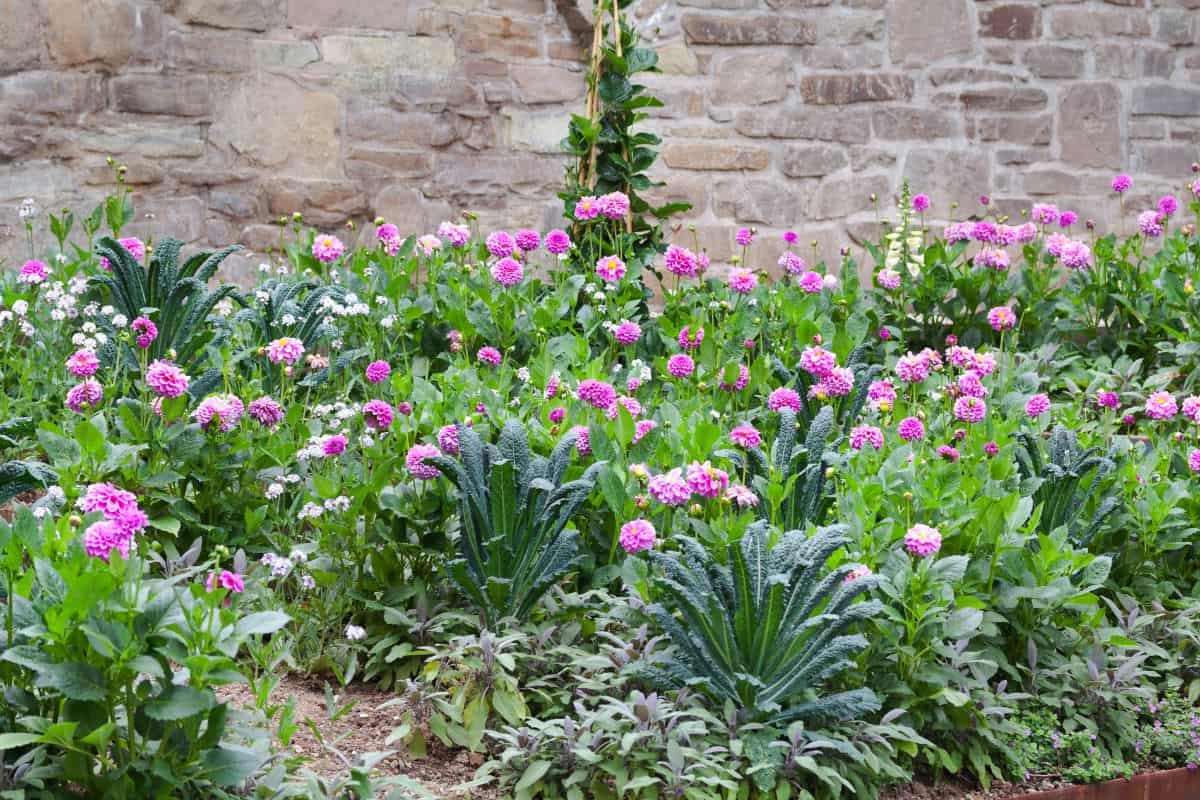
The dahlia plant can be attacked by diseases such as wilt, powdery mildew, and stem rot, amongst others.
They are caused and transmitted by insects, pests, or as a result of damp and humid conditions. Dahlias can become unhealthy due to too much water, or inadequately drained soils.
You can control the disease by cutting off the diseased flowers and plants by doing the following:
Cut The Parts of Dahlia That Have Disease
Cut off the parts of the dahlia flower that are turning brown, have brown spots, or are withered. This stops the spread of disease to other parts of the plant or from one plant to another. Throw away the bad parts by burying them deep in the soil or burning them.
Spray Fungicide

An example of a disease caused by fungus is the botrytis-blight. You can identify this disease when brown spots form on the petals. If not treated early, it can lead to the petals looking like they have gray wool on them. Diseases caused by fungus thrive in climates that are cool and wet.


Have a look at this fungicide on Amazon.
If you live in such an area, you can spray a fungicide to treat the disease if you notice it early. However, most of these diseases can be fatal, meaning you might have to start planting again using disease-resistant tubers.
You can treat diseases caused by insects by using insecticides. Also, you can kill pests like slugs using insecticidal soap spray like the one shown below.


Have a look at this insecticidal soap spray on Amazon.
When you notice your plants looking different, find out immediately what’s causing it, and get treatment. You can get these online or in local garden shops.
Pull Out Entire Plant That Has Knots
Dahlia plants can get affected by a disease called knot nematode. The root-knot nematode is a parasitic worm that attacks the roots and the soil around the root. The worm causes the knots or bumps to appear on the roots and may even deform the roots.
The deformation prevents the plant from absorbing water and nutrients from the soil through the roots. The first signs you will notice include stunted growth and the plants turning yellow. The solution to this problem is to uproot all the affected plants.
Professional growers can use nematicides, though these are not yet approved for home gardens. Therefore, you may have to grow new dahlias in a new part of your garden that is not affected by the disease.
To treat the affected area, you can solarize by covering the soil with a plastic sheet. This allows the temperatures of the soil to rise to 120 degrees Fahrenheit, killing the nematodes.
Another method for treating your soil includes heating the soil in the oven in portions. However, this is only practical if the area is small.
Burn Dahlia Roots And Plants That Have Discolored Veins.
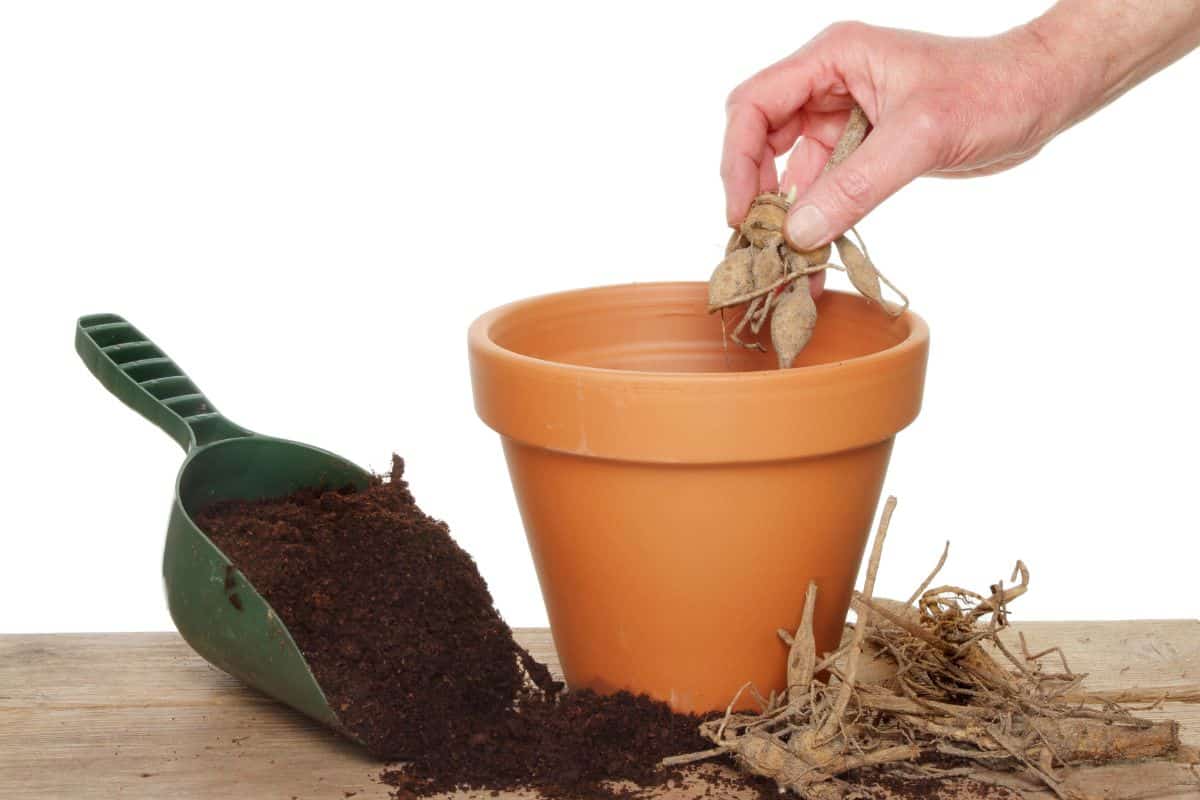
A discolored dahlia that has withered leaves is a sign it has a disease called verticillium wilt caused by a fungus. This disease can remain in the soil for many years, that can kill the plant if not treated.
The solution is to uproot all the affected plants and burn them. However, you can throw them in the landfill if burning is not allowed in your area.
Also, burn or throw away the plants if you see mosaic mottling on the leaves caused by aphids.
Reduce Wetness On Dahlias With Smut
Smut is a disease that causes white or pale spots to appear on the leaves. Inside the white spots are other light to brown spots. To treat this disease, use fungicides, and avoid watering above the plants. Instead, water the base of the plants, so that the water goes to the roots.
Dig The Dahlia Bulbs Out Of The Ground
If you experience long winters it would be good to take the bulbs out of the ground during fall. Afterward, store them during the winter. According to the cold hardiness zones, you can leave your dahlias in the ground beginning from zone 8 and upwards.
Prepare For The Winter Season
You can store your dahlia bulbs during the winter season by doing the following:
Cut Foliage Between Two And Four Inches Above The Ground
The dahlia foliage will turn black as it nears the end of its growing season or first frost. If you prefer, you can wait until this happens before you cut back the plant. Waiting will also prepare the bulb for storage.
You can use a small spade to dig out the bulbs gently and shake the soil off the roots. If you notice any rotten bulbs, cut them away with a sharp knife.
Hang Bulbs To Dry
Find a suitable place that is cool and dry, like your garden shade or basement, and hang the bulbs up to dry for about three weeks. Ensure the bulbs are completely dry before storing, or they will rot.
Store The Bulbs
Store your dahlia bulbs in a container filled with loose material like sawdust and coarse sand. You could use any other suitable material so long as it is dry and loose to protect your bulbs from humidity. It prevents them from rotting.
So that you do not suffocate your bulbs, cover them with a breathable material. Store the container in a well-ventilated place that is free of frost. The correct temperatures should be between 35 and 50 degrees Fahrenheit.
However, keep checking on the bulbs throughout winter and throw away any that have rotted. With the arrival of spring, you can plant the dahlia bulbs.
How To Grow Healthy Dahlias
The following are tips on how to grow healthy dahlias
- Ensure they have enough sunlight, at least six hours a day.
- Ensure they have enough water, though don’t overwater as they are susceptible to rot.
- Use a fertilizer that doesn’t have too much nitrogen, or it will produce a lot of leaves but few flowers.



You can find this fertilizer for your flowers on Amazon.
- Don’t plant dahlias too early, or the tubers will remain in soaked soil during the spring rain and may rot.
- Remember to deadhead to produce more blooms.
In Closing
Dahlias are pretty flowers that need good care to bloom. Cutting back, using fertilizer, and spraying the necessary insecticides or fungicides, will give you a large harvest of healthy blooms.

You may read our previous posts below:
